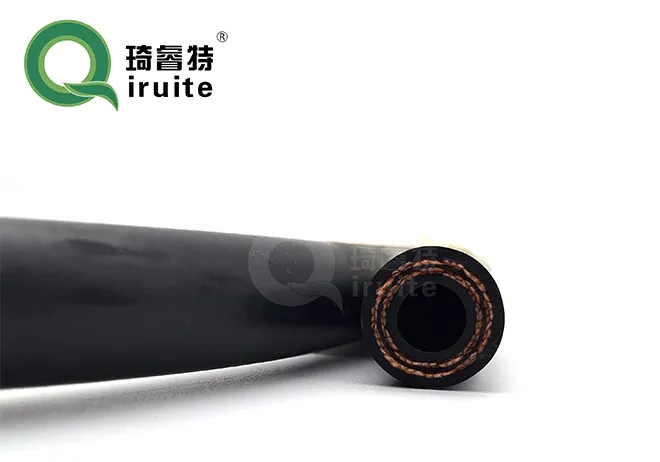The Impact of Weather and Environmental Conditions on Brake Hoses
Brake hoses are a critical component of your vehicle's braking system, ensuring that the necessary hydraulic pressure is transmitted effectively from the master cylinder to the brakes. However, various weather conditions and environmental factors can significantly affect the lifespan and performance of brake hoses.
Extreme Temperatures and Their Effect on Brake Booster Vacuum Hose to Carburetor
Extreme temperatures, whether hot or cold, can have a significant impact on the brake booster vacuum hose to carburetor. In high heat, the materials used in brake hoses can become more pliable, which may lead to swelling or softening. This can cause a decrease in the hose's ability to maintain pressure, leading to reduced braking performance. On the other hand, extreme cold can make the hoses brittle, increasing the likelihood of cracks or breaks, especially when combined with the stress of frequent use.
Regular inspection of the brake booster vacuum hose to carburetor during extreme temperature fluctuations is crucial. If you live in an area with harsh winters or scorching summers, consider using hoses made from materials specifically designed to withstand such conditions, or ensure that your current hoses are in good condition to handle these extremes.
The Role of the Brake Booster Vacuum Line in Adverse Weather Conditions
The brake booster vacuum line is another critical component that can be affected by environmental conditions. In wet or humid environments, moisture can infiltrate the vacuum line, leading to potential corrosion or degradation over time. This can weaken the vacuum line, making it less effective at maintaining the necessary pressure in the brake booster, which could result in decreased braking efficiency.
Additionally, road salt used in icy conditions can be particularly corrosive to the brake booster vacuum line. Salt can accelerate the rusting process, which can compromise the integrity of the vacuum line and lead to failures. To combat this, it's essential to regularly clean and inspect the vacuum line, especially after driving in snowy or icy conditions where road salt is prevalent.
How Road Salt and Debris Affect Brake Duct Tubing
Brake duct tubing plays a vital role in cooling the brakes by directing air towards them, preventing overheating during intense braking. However, this tubing can be severely affected by environmental factors such as road salt, dirt, and debris. Over time, exposure to these elements can lead to clogging or damage to the brake duct tubing, reducing its effectiveness in cooling the brakes and potentially leading to brake fade or failure during heavy use.
To ensure optimal performance, it’s important to keep brake duct tubing clear of debris and inspect it regularly, especially if you frequently drive in environments where road conditions are poor. Replacing damaged or clogged tubing is essential for maintaining your vehicle's braking performance.
Importance of Durable Brake Hose Fitting in Harsh Conditions
The brake hose fitting is a crucial part of the brake system, connecting the brake hoses to other components. In harsh weather conditions, particularly in areas with significant temperature changes or high humidity, these fittings can corrode or become loose. A compromised brake hose fitting can lead to leaks, which can reduce the hydraulic pressure in the braking system and decrease braking effectiveness.
Using high-quality, corrosion-resistant brake hose fittings can help prevent these issues. Regular inspection and maintenance of the fittings are also necessary to ensure they remain secure and effective, especially in environments that expose them to harsh weather conditions.
Prolonging the Lifespan of Your J1401 Brake Line in Extreme Environments
The J1401 brake line is designed to meet specific standards for safety and durability, but even these high-quality lines can be affected by extreme environmental conditions. Exposure to intense UV rays, fluctuating temperatures, and road chemicals can all contribute to the degradation of the J1401 brake line over time.
To prolong the lifespan of your J1401 brake line, consider parking your vehicle in shaded areas or garages to reduce UV exposure and routinely check the lines for signs of wear or damage. If you live in an area with particularly harsh weather conditions, more frequent inspections and possibly earlier replacement of the brake lines may be necessary to ensure the continued safety and performance of your braking system.
Weather and environmental conditions can have a profound impact on the performance and lifespan of your vehicle’s brake hoses. By understanding these effects and taking proactive measures to protect and maintain your brake components, you can ensure the continued safety and reliability of your vehicle, no matter the conditions you drive in. Regular inspections, using quality materials, and addressing issues promptly are key to avoiding costly repairs and potential safety hazards on the road.
-
Quick Release Ball Joint – Tool-Free, Durable, Leak-Tightସମ୍ବାଦNov.13,2025
-
Spiral Guard Hose Protection — Durable, UV-Resistant Wrapସମ୍ବାଦNov.13,2025
-
SAE J1401 Brake Hose Specifications: Durable, Low Expansionସମ୍ବାଦNov.13,2025
-
SAE J1401 Brake Hose Specifications | DOT-Approved, Durableସମ୍ବାଦNov.13,2025
-
Spiral Guard Hose Protection - Abrasion-Resistant, UV-Stableସମ୍ବାଦNov.10,2025
-
SAE J1401 Brake Hose Specifications | DOT-Certified, Durableସମ୍ବାଦNov.10,2025



